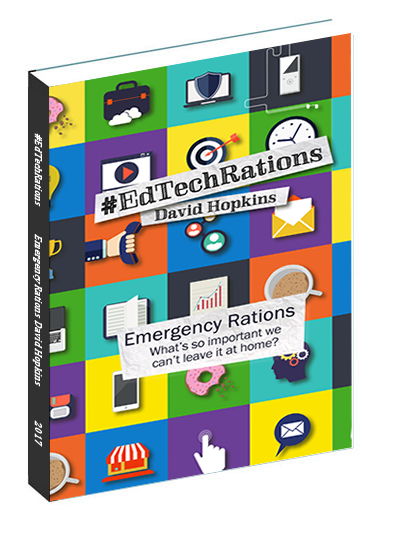A Critical Evaluation of Blackboard (by Stephanie Coopman)
 Wow, talk about powerful stuff! I’ve just finished reading the report by Stephanie Coopman called “A Critical Evaluation of Blackboard’s eLearning Environment“.
Wow, talk about powerful stuff! I’ve just finished reading the report by Stephanie Coopman called “A Critical Evaluation of Blackboard’s eLearning Environment“.
For those interested, I found the report when I followed the reference to it from the eLearn Magazine post by Mark Notess; “Not Dead Yet? Why the Institutional LMS is Worth Saving”. Another article well worth reading, if you’ve time.
I will admit that this is slightly out of date, as Blackboard is now offering Blackboard vn9 to UK Institutions (the US have had this option for a year or more already) and her report concentrates on version 8 and CE6 (hybrid of Blackboard and WebCT), but this shouldn’t not detract from the points she raises; while there is a huge difference between ‘how‘ Blackboard works between versions 8 and 9, there is little difference in ‘what‘ it does.
So, what does Stephanie say:
“As the physicality of a classroom structures student–instructor and student–student interaction, online course delivery platforms such as Blackboard provide the framework for class communication. And like the room, seating arrangement, and other aspects of the in person classroom context, Blackboard’s structure largely goes unnoticed. Yet how a classroom is organized, whether in person or online, will influence how communicators interact within that classroom.”
In a previous post I show the video of Stephen Heppell looking at the Design of Learning Spaces, and this supports Stephanie’s writing here with his observations. The ‘revolution’ of the learning spaces must also happen online, in the VLE.
“The Blackboard learning management systems provide mechanisms for students to interact directly with each other and the instructor. But these platforms have yet to move beyond fairly basic communication features.”
Blackboard is gradually giving us more control, but over the same tools.
“Each new version of Blackboard includes upgraded assessment tools, such as the grade function for discussion boards, yet less control for instructors and students over how they wish to structure their online experiences. Facilitation of rich and sophisticated communication in online classrooms requires thinking outside the box — thinking outside of Blackboard Inc. and other for–profit learning management software systems.”
Upgrades are all part-and-parcel of software licences. Like Microsoft not all upgrades are welcome, not all changes work (!), and not everyone wants them. But, in order to receive one or two perceptible improvements, we must accept all the changes offered even when you might lose the functionality you previously enjoyed.
“As with the physical space of in person classes, students have little say in the technology used to deliver online courses. However, students can vote with their feet by not taking classes that rely on Blackboard or other proprietary LMS. Students can also request to communicate outside the LMS.”
This comes full circle to my earlier point (and link) to Stephen Heppell’s video about the learning space. If the students ‘can’ vote with their feet about a dissatisfaction with a physical learning space, what can they do about the virtual learning space we ask them to inhabit during their eLearning experience with us?
While Stephanie’s conclusion doesn’t go as far as actually saying that Blackboard is limiting us and is forcing an inherent structure on the students and instructors, Blackboards dominance in the VLE market (especially since it’s acquisition of WebCT and ANGEL) should be questioned because;
- While we, as instructors and learning technologists, are trying to produce personalised learning and true eLearning materials, we are constrained in the tightly controlled structure that is imposed on us by the Blackboard marketing and designers. Thus we are passing this legacy on to our learners. Is that really acceptable?
- With the number of anecdotal examples I read on Twitter, and in the education press, increasing almost weekly informing us on different Institutions dropping Blackboard in favour of other systems, you would hope that the board at Blackboard are taking notes and looking at
- what is going wrong,
- what the other systems offer that they don’t, and
- how can they make the Blackboard system a stronger and more relevant system for the changing learning environment.
As always, please let me know your thoughts below.


















Hi David
Have you upgraded to Bb9 yet? I am the Bb systems admin for Trinity University College in Carmarthen West Wales and am working on the rollout of the community system in Bb 8 this summer. We had hoped to go to 9 too but it just wasnt ready in time, sadly. We are now intending to upgrade between semesters at the end of Jan 2010 with a bit of luck and I personally cant wait to administer something a little more modern! All my users say that Bb is ‘clunky’ and consider it to be quite old fashioned and when you consider the cost of the licences, it is surpising it didnt modernise itself earlier. I very much fear Bb is getting left behind by other more user friendly tools and the economic downturn may well hasten the rush from Bb to Moodle and other non-VLE alternatives.
I agree with Mike, this is an important point to what this is about.